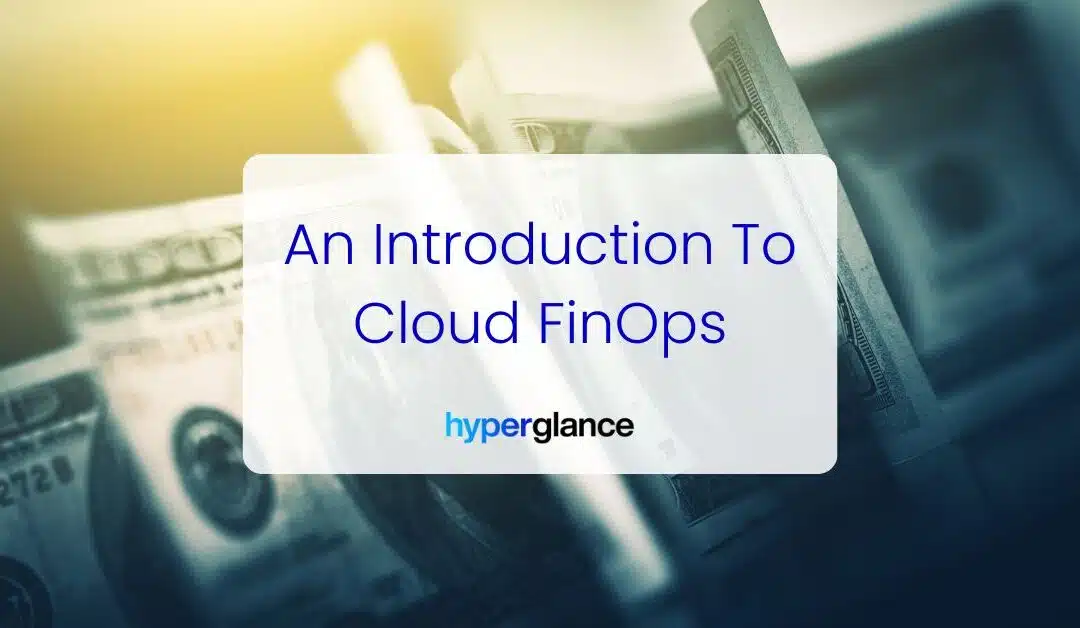A Growing Discipline
With cloud costs spiralling out of control, grimace-inducing inflation, and a global recession seemingly ever-looming, cloud costs have never been more under the microscope.
Forrester Senior Analyst, Tracy Woo, says that 80% of her cloud conversations involve FinOps in some way, even if cloud cost management cost isn't the central topic.
Cloud professionals, already in high demand, are being drafted in to save money in organizations across the world. Executives are catching wind of a new discipline.
The beating heart of those improvements is a mixture of frameworks and best practices, e.g. AWS-Well Architected, along with one of the newer kids in town - FinOps.
Here's what we'll cover in our guide:
What is FinOps?
FinOps is a term coined by the FinOps Foundation.
Finance + DevOps = FinOps.
At its heart, FinOps is a cultural practice designed to bring technology, finance, and business teams together to drive financial accountability.
The framework enables teams to manage their own costs and take ownership of their usage. Cross-functional teams collaborate to improve financial control and predictability without compromising their throughput speed.
In December 2023, the technical board that oversees the FinOps Foundation updated their definition of FinOps:
"FinOps is an operational framework and cultural practice which maximizes the business value of cloud, enables timely data-driven decision making, and creates financial accountability through collaboration between engineering, finance, and business teams."
Cloud Financial Management, the closely related cornerstone of FinOps, involves the careful management and optimization of financial resources in cloud services. It focuses on monitoring, analyzing, and managing cloud-related costs to guarantee cost efficiency and budget compliance.
Its goal is to couple the advantages of cloud computing, such as scalability and agility, with cost-effective resource distribution and fiscal control. Implementing solid financial management practices allows organizations to streamline cloud expenses, synchronize cloud expenditure with business goals, and bolster financial efficacy in cloud operations
What is Cloud FinOps?
In the context of the cloud, FinOps involves activities such as tracking and allocating cloud expenses, optimizing resource utilization, implementing cost-saving measures, and ensuring financial transparency and accountability. It requires collaboration between finance, operations, and engineering teams to align cloud spending with business objectives and to make informed decisions about resource allocation and provisioning.
FinOps practices typically involve the use of cloud cost management tools, budgeting and forecasting, continuous monitoring of cloud usage and costs, implementing tagging and labeling strategies for cost allocation, and implementing policies and controls to optimize cloud spending.
By adopting FinOps principles and practices, organizations benefit from better visibility into their cloud costs, more informed decisions to optimize spending, and ultimately achieve more cost-effective and efficient cloud operations.
🧠 Need to brush up on your jargon? Head over to our FinOps glossary.
The FinOps Foundation
The FinOps Foundation, a program of The Linux Foundation, is dedicated to helping people who practice cloud financial management.
The foundation has over 23,000 individual members spanning over 10,000 businesses. It provides a wide variety of training and certifications, including FinOps Certified Practitioner.
If you'd like to know more about the FinOps Foundation, including its mission, structure, and staff, visit FinOps.org.
What Else is FinOps Known As?
FinOps as a framework is attributed to the FinOps Foundation, but the high-level concept is often referred to by other names:
- Cloud FinOps
- Cloud Financial Management (CFM)
- Cloud Financial Engineering
- Cloud Optimization
- Cloud Cost Management
- Cloud Cost Optimization
- Cloud Financial Optimization
- Cloud Cost Management & Optimization (CCMO)
In the past, it's also been known as 'Cloud Financial Operations'. That's fallen out of favor with the FinOps Foundation because it was commonly confused with 'Financial Operations' (a separate role that already exists in Finance teams).
Why is FinOps Important?
Google Cloud summarize the value as five-fold:
1. FinOps accelerates business value realization & innovation
2. FinOps drives financial accountability & visibility
3. FinOps optimizes cloud usage & cost efficiency
4. FinOps enables cross-organizational trust & collaboration
5. FinOps prevents sprawl of cloud spend
Organizations that follow the processes and best practices can expect to benefit from:
- Improved cost-efficiency
- Renewed focus on infrastructure, support, and implementation
- Enhanced operational resiliency (and service quality)
- Superior cloud security posture
- Reduced time to market by accelerating development throughput
What is the FinOps Framework?
Although other versions exist, e.g. Google Cloud, the official FinOps Foundation Framework is divided into 6 areas:
- Principles
- Personas
- Phases
- Maturity
- Domains
- Capabilities
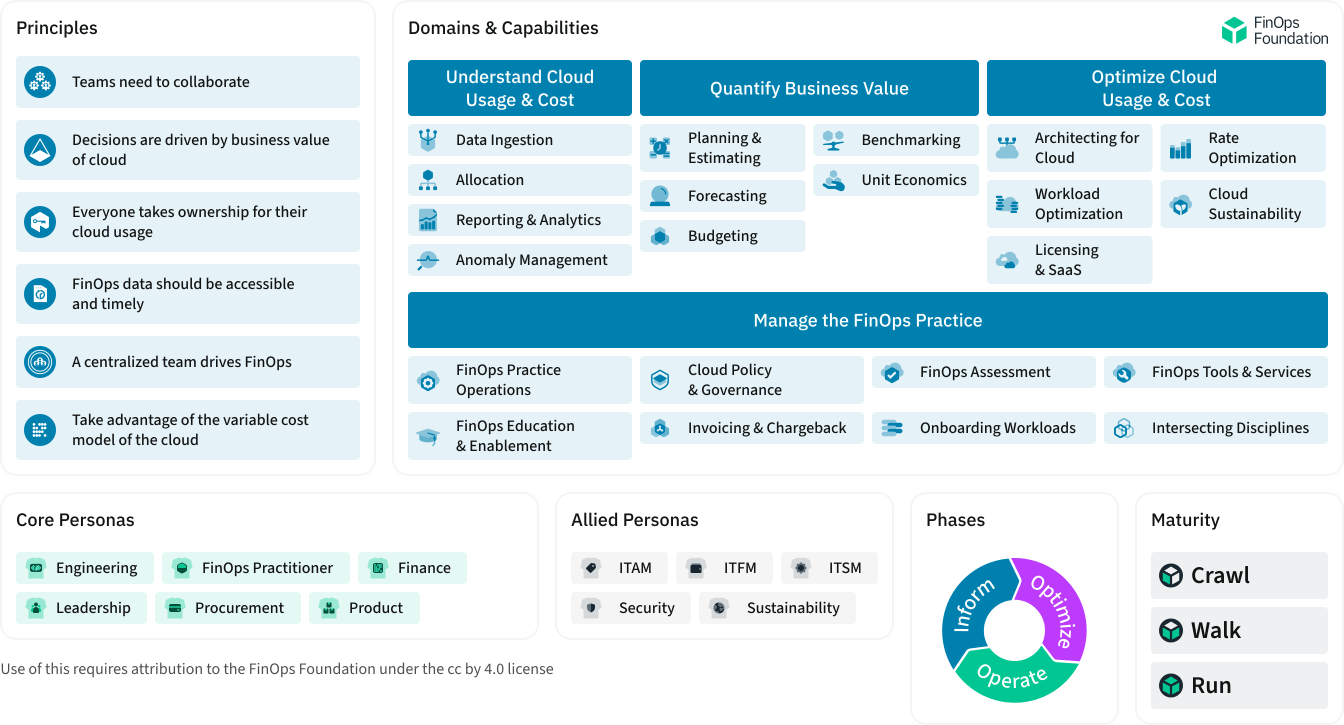
Source: The FinOps Framework by FinOps Foundation
📝 If frameworks are important to you, check out our AWS Well-Architected Framework Checklist
Principles
The FinOps Framework comprises 6 core principles. The principles were intended as north stars to guide all the activity associated with cloud financial management.
Initially, a book announced at CloudyCon in 2019, they were originally put together with AWS FinOps in mind, but over time they have been refined by FinOps Foundation members and now cover multi-cloud setups.
1. Teams need to collaborate
Finance, technology, product, and business teams collaborate in near real-time, optimizing cloud operations on a per-resource, per-second basis. They continuously work together to enhance efficiency and drive innovation.
2. Decisions are driven by the business value of the cloud
Unit economic and value-based metrics more effectively demonstrate business impact than aggregate spend. Teams make conscious trade-offs among cost, quality, and speed, viewing the cloud as a driver of innovation.
3. Everyone takes ownership of their cloud usage
Accountability for usage and cost is decentralized, with engineers owning costs from design to operations. Feature and product teams manage their cloud usage within budget, making cost-effective decisions about architecture and optimization. Technical teams consider cost a key efficiency metric from the start of the software development lifecycle.
4. FinOps data should be accessible and timely
Cost data is processed and shared immediately, providing real-time visibility that drives better cloud utilization and efficient behavior. All organizational levels have consistent visibility into cloud spend, with fast feedback loops promoting efficiency. Real-time financial forecasting, planning, trending, and variance analysis explain cost increases. Internal team benchmarking fosters best practices and celebrates successes, while industry peer-level benchmarking assesses company performance.
5. A centralized team drives FinOps
One team promotes and supports best practices in a shared accountability model, similar to security. Executive buy-in for FinOps practices is essential. Rate, commitment, and discount optimizations are centralized to leverage economies of scale, freeing engineers and operations teams to focus on optimizing their environments without worrying about rate negotiations.
6. Take advantage of the variable cost model of the cloud
The cloud's variable cost model is seen as an opportunity for value. Just-in-time prediction and agile planning are prioritized, along with proactive system design and continuous cloud optimization.
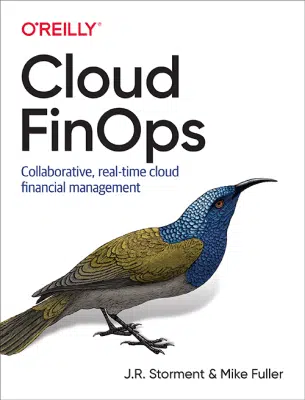
Personas
The FinOps Framework is designed for 6 core personas and 5 allied personas.
Core personas: In most organizations, these are the personas that are highly likely to be heavily involved in FinOps.
Allied personas: These roles, often emerging disciplines, may not be directly involved in FinOps. However, it's very possible they will need to interact closely with FinOps Practitioners.
Core Personas
- FinOps Practitioner
- Leadership (formerly 'Executives')
- Product (formerly 'Business/Product Owner')
- Engineering (formerly 'Engineering & Operations')
- Finance (formerly combined with 'Procurement')
- Procurement (formerly combined with 'Finance')
Allied Personas
- ITSM/ITIL (IT Service Management & IT Infrastructure Library)
- ITAM (IT Asset Management)
- Sustainability
- Security
- ITFM & TBM (IT Financial Management & Technology Business Management)
🎧 Treat your ears to our list of the best FinOps podcasts
Phases
The FinOps Framework has 3 iterative phases, also known as the lifecycle.
Because each team's progress will vary to some degree, it's normal for an organization to be in multiple phases at once.
Inform: Organizations focus on gathering and analyzing data on cloud costs, usage, and efficiency. This data is crucial for accurate allocation, budgeting, forecasting, and developing key performance indicators (KPIs) that reveal the business value of cloud spending. Proper tagging, account management, and business rules ensure precise reporting, helping financial and business teams drive ROI, stay within budget, and avoid unexpected costs.
Optimize: In this phase, teams focus on enhancing cloud efficiency and maximizing value from cloud investments. Building on the data and insights from the Inform phase, this stage involves right-sizing underutilized resources, adopting modern architectures, and automating waste elimination. The ultimate objective is to identify and implement opportunities that enhance cloud performance and deliver greater value.
Operate: In the third phase, teams implement changes to make FinOps a core operational practice. This involves establishing governance policies, monitoring compliance, and developing training programs, guidelines, and automation policies aligned with organizational goals. Teams utilize insights from the Inform phase and opportunities identified in the Optimize phase, maintaining a proactive approach throughout the organization.
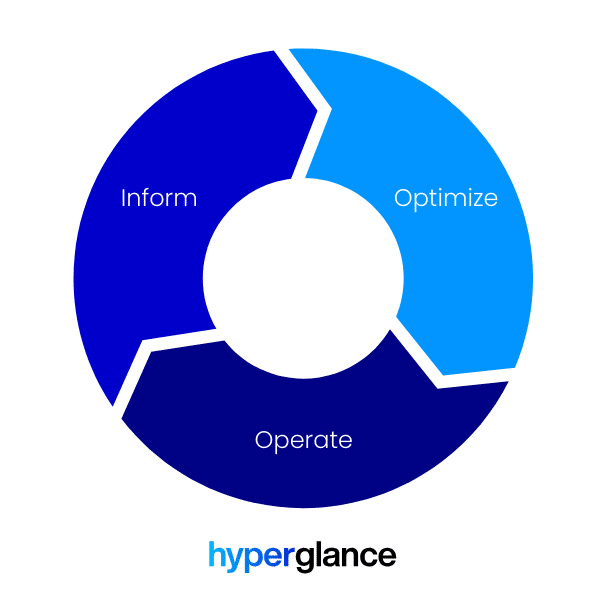
🥵 Struggling to implement FinOps in your organization? This guide will help you.
Maturity
The FinOps Framework categorizes maturity into three levels, defined by their typical characteristics (and example goals/KPIs):
Crawl: Organizations have minimal reporting and tooling, basic KPIs, and initial processes and policies in place. While the capability is understood, it isn't universally adopted, and efforts are focused on addressing "low-hanging fruit" to demonstrate the benefits of maturity.
Walk: At this stage, the capability is well-understood and followed, with automation and processes covering most requirements. While difficult edge cases are identified, only those threatening financial well-being are prioritized for resolution. Medium to high goals and KPIs are set to measure success.
Run: By this point, the capability is fully understood and followed by all teams, with difficult edge cases being addressed. Very high goals and KPIs are set for measuring success, and automation is the preferred approach.
Maturity runs through the framework into capabilities (see below), with detailed guidance included for assessing capability maturity, and guidance for moving up the ladder.

Domains
The 2024 version of the FinOps Framework now has 4 domains.
Each domain represents an area of knowledge and activities performed by every organization. Domains all relate directly to Capabilities (see below).
The domains are all related to each other, and provide a high-level overview of the functional tasks and processes needed to run a best-in-class FinOps practice.
1. Understanding Cloud Usage and Cost
This focuses on comprehensively understanding an organization's cloud usage by gathering necessary data on costs, usage, observability, utilization, and sustainability. It defines the processes for categorizing, allocating, and reporting cloud costs, ensuring this information is accessible for all FinOps activities.
2. Quantify Business Value
Organizations develop capabilities to link cloud usage and cost data with the business value it generates, ensuring transparency and alignment with expectations. Activities include mapping costs to budgets, forecasting with historical and future data, establishing and measuring KPIs, and benchmarking across teams and organizations.
3. Optimize Cloud Usage & Cost
This domain emphasizes cloud efficiency, ensuring resources are used only when valuable and purchased at the lowest acceptable cost to meet organizational goals. Efficiency is measured in various ways, including monetary cost, carbon usage, and traditional IT metrics. Capabilities include managing resource types, timing, and costs, modernizing architecture, considering sustainability, and using licensed and consumption-based SaaS products.
4. Manage the FinOps Practice
This promotes continuous improvement, aligning people, processes, and technology to adopt FinOps and maximize cloud value. It focuses on effective FinOps operations and enhancing interactions across all business functions to better support cloud usage.
🤝 Everything you need to know about FinOps-Ops-as-a-Service (FaaS)
Capabilities
The FinOps Framework contains a detailed set of 22 capabilities. They represent functional areas which support a domain (see above).
Each capability area contains detailed information, tasks and processes that facilitate the best practice implementation throughout the lifecycle phases - right through to metrics to measure your success. The capabilities also include guidance you can use to assess your maturity.
Understanding Cloud Usage and Cost:
- Data Ingestion
- Allocation
- Reporting & Analytics
- Anomaly Management
Quantify Business Value:
- Planning & Estimating
- Forecasting
- Budgeting
- Benchmarking
- Unit Economics
Optimize Cloud Usage & Cost:
- Architecting for Cloud
- Rate Optimization
- Workload Optimization
- Cloud Sustainability
- Licensing & SaaS
Manage the FinOps Practice:
- FinOps Practice Operations
- Cloud Policy & Governance
- FinOps Assessment
- FinOps Tools & Services
- FinOps Education & Enablement
- Invoicing & Chargeback
- Onboarding Workloads
- Intersecting Disciplines
FinOps Success Metrics
Each framework capability comes with recommended metrics sourced from FinOps community feedback, regardless of your maturity (crawl, walk, run).
Google recommended its own five high-level metrics in a previous post:
Cloud enablement %
The number of cloud certified/trained business leaders / the number of cloud learners across the organization
- Crawl: Less than 40%
- Walk: 40-70%
- Run: More than 70%
Cloud allocation %
The % of cloud spend being allocated to the responsible business or product owner
- Crawl: Less than 70%
- Walk: 70-90%
- Run: More than 90%
Cost optimization realized savings %
Total cloud services optimized ($) / total cloud services optimizable ($)
- Crawl: Less than 70%
- Walk: 70-90%
- Run: More than 90%
Annual forecast accuracy %
Actual annual cloud spend ($) / forecast annual cloud spend ($)
- Crawl: Less than 70%
- Walk: 70-90%
- Run: More than 90%
FinOps automation %
Number of automated recommendations implemented / total list of automated recommendations that result in cost savings
- Crawl: Less than 20%
- Walk: 20-50%
- Run: More than 50%
Measuring FinOps Success Metrics
By leveraging a Cloud KPI dashboard, organizations can effectively measure FinOps success metrics, gain insights into cloud financial management, and make informed decisions to optimize costs and resource utilization in the cloud environment.
A Cloud Key Performance Indicator (KPI) dashboard is an effective tool for measuring FinOps success metrics for several reasons:
- Centralized Monitoring: A KPI dashboard provides a centralized view of key metrics related to cloud spending, resource utilization, and cost optimization. It consolidates data from various sources and presents it in a visually intuitive format, enabling stakeholders to easily track and monitor FinOps performance.
- Real-time Insights: A dashboard offers real-time, or near real-time, updates on cloud-related metrics, allowing organizations to stay on top of their current financial and operational status. This enables proactive decision-making and timely corrective actions to address any cost overruns or optimization opportunities.
- Data Visualization: Dashboards use visual elements such as charts, graphs, and tables to represent complex data in a concise and understandable manner. This visual representation makes it easier to spot trends, patterns, and anomalies, facilitating quick identification of areas where FinOps initiatives are succeeding, or need improvement.
- Performance Tracking: A dashboard allows for continuous tracking and monitoring of key performance indicators over time. It enables stakeholders to compare current performance against historical data, set benchmarks or targets, and track progress toward FinOps goals. This helps in evaluating the effectiveness of implemented strategies and making data-driven decisions to improve cloud financial management.
- Customization & Drill-down Capabilities: A KPI dashboard can be customized to display the specific metrics and visualizations relevant to an organization's FinOps objectives. It also provides the ability to drill down into detailed data to investigate specific cost drivers or identify opportunities for optimization at a granular level. This flexibility allows stakeholders to tailor the dashboard to their specific needs and gain deeper insights into FinOps performance.
- Communication & Collaboration: A dashboard serves as a communication tool, providing a common visual language for stakeholders across different teams or departments. It facilitates collaboration and fosters a shared understanding of FinOps performance, enabling discussions and actions to drive cost optimization efforts collectively.
How to Choose a FinOps Tool
Firstly, each cloud provider has valuable (mostly) free options, e.g. AWS Cost Explorer.
These tend to be dashboard-style charts and tables that visualize your costs and allow you to dig down into specific areas.
To some degree, these rely on your architecture being well managed (think tagging strategy). To a larger degree, these tools require human effort. Maximizing the value of these tools is challenging.
Azure & AWS FinOps Cost Optimization
Best-in-class cost optimization for AWS & Azure is only possible using third-party tools.
Not only are these tools biased towards lower cloud bills, but they dig far deeper into your costs and save you time.
When looking for third-party tools, e.g. Hyperglance, make sure it includes these features:
- Multi-cloud coverage
- Real-time monitoring & alerting
- Pre-defined, customizable rule-based automations
- Visualization of your costs with the ability to overlay them onto a diagram of your architecture
- Reserved Instance (RI) and right-sizing recommendations
- Anomaly detection
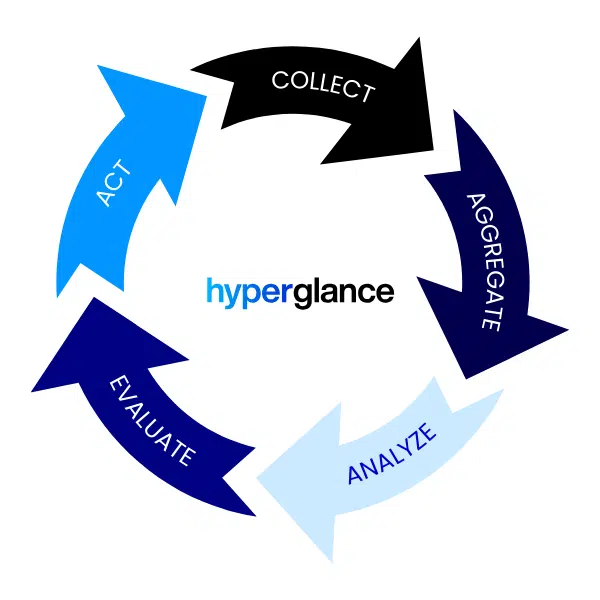
Best-in-Class Tools for FinOps, Architects & Engineers
Hyperglance is rapidly becoming the preferred cost optimization tool of FinOps, GreenOps and Cloud professionals worldwide.
Open your eyes to a world of detailed analytics, actionable insights, codeless automation, billing reports, trend analysis, and anomaly detection.
The only thing dropping as fast as your cloud costs will be your stress level.
Why Choose Hyperglance?
- From RI recommendations to right-sizing and orphaned resources, Hyperglance ships with a best-in-class cost-optimization rules engine and billing reports.
- Layer your AWS, Azure & GCP costs over intuitive, interactive exportable diagrams and customizable dashboards. Find problem resources using powerful filtering and grouping.
- Access deep analytical views of cloud usage, enabling rapid resource optimization, anomaly detection & alerting, proactive cost management, and laser-accurate forecasting.
- Cost optimization is just the start. Use Hyperglance to explore enlightening real-time inventory diagrams, identify and fix security issues, and automate jobs.
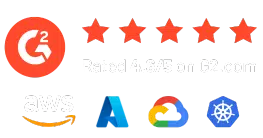

About The Author: Stephen Lucas
As Hyperglance's Chief Product Officer, Stephen is responsible for the Hyperglance product roadmap. Stephen has over 20 years of experience in product management, project management, and cloud strategy across various industries.
